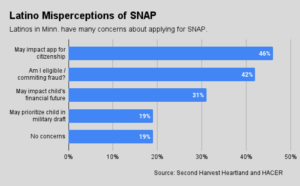The USDA saved the day when it announced on January 8, that SNAP benefits would be available through February, despite the government shutdown. But the technique it is using to make benefits available in February will not be possible in March, raising the specter of severe hardship for millions of people if the shutdown persists.
To fund SNAP through February, the USDA turned to a provision that allows funding measures to incur obligations for 30 days past their expiration. The clock started ticking on the 30-day grace period when the government shuttered on December 21st at midnight, which explains why the USDA is requiring states to issue February SNAP benefits by January 20th. (SNAP benefits for January were already fully funded at the time of the shutdown.)
The rushed issuance of February benefits could well sow confusion among recipients, who may not realize that these benefits are early, not extra. But at least the benefits will be there in full. No one can say the same for March benefits, since the USDA has not indicated what contingency options will be available at that time.
“There are different pots of money the USDA potentially has access to, but it’s very clear that they’re not certain how it will be funded,” said Robert Campbell, policy director at Feeding America. He struggled to come up with an adjective extreme enough to describe how catastrophic a lack of SNAP funding would be, noting that for every one meal distributed by the Feeding America network, the SNAP program provides 12. “It would be a massive upheaval,” he said.
The USDA currently has a reserve of $3 billion from the fiscal year 2018 appropriations act, according to a January 10, report from the Center on Budget and Policy Priorities, but that amount would not be enough to cover the $4.8 billion it would cost to fund SNAP in March. If this partial funding were to be spread evenly over all 19 million SNAP households for the March SNAP distribution, the average cut per household would be at least $90 or close to 40%, says CBPP.
By some accounts, the USDA will be obligated to continue releasing SNAP benefits even if the shutdown pesists. David A. Super, Professor of Law at Georgetown University Law Center, noted in a Jan. 9, paper that eligible households have a “legal right to continued benefits” under the Food and Nutrition Act of 2008. In addition to a continued flow of benefits, Prof. Super finds evidence in the law that reimbursements for the administrative costs of distributing food should be similarly safe from cuts.
The USDA, for now, is giving no such guidance. Here is a summary of how long it expects various federal nutrition-assistance programs to be funded during the shutdown.
| PROGRAMS | FUNDING DURATION |
| SNAP | Through February |
| School Meals | Feb. and March |
| CACFP | Feb. and March |
| WIC | Through February |
| CSFP | Through February* |
| TEFAP | Through February* |
| FDPIR | Through February* |
| * Funding covers food, but not administrative costs. Source: USDA |





